Traditional Spotted Dick
This post may contain affiliate links. See my disclosure policy.
A quintessential British dessert, Spotted Dick represents everything that is delicious about traditional English cooking. Tender steamed pudding dotted with succulent currants is drizzled with a luxuriously rich and creamy vanilla custard (recipe included). It’s pure heaven!
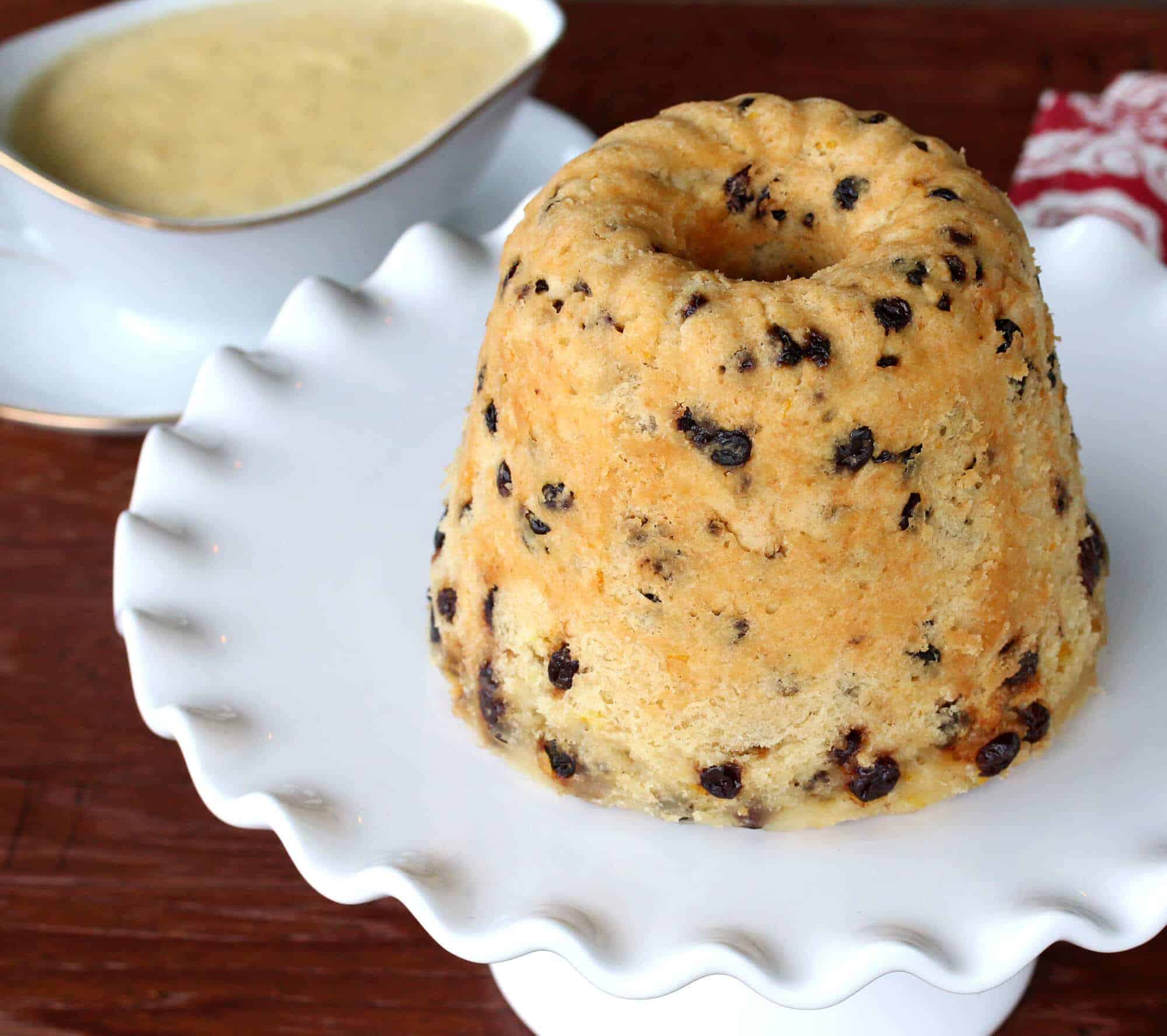
What is Spotted Dick?
“Spotted what?” I hear you. That’s the most common question from the snickering lips of Americans the first time they hear the name of this legendary British steamed pudding, Spotted Dick. I was among that giggling crowd when I first moved to England for a 7-year stint, being quite naive to British terminology beyond what I had picked up from my favorite older British sitcoms (e.g., Fawlty Towers, Black Adder, Monte Python, etc). And what’s interesting is that despite its immense popularity over the course of at least two centuries, time seems to have lost the origins of its quirky name.
What is the Origin of Spotted Dick?
While “spotted” seems simple enough (i.e., the “spots” throughout the pudding from the dried currants), “dick” is the more puzzling of the two terms. Was it referring to the nickname of someone named Richard? Some have wondered if comes from an old English corruption of the word pudding to “puddick.” But who knows? The mystery of Spotted Dick goes on.
The first known recorded recipe of Spotted Dick is found in the mid-19th century cookbook, The Modern Housewife or Ménagère, by Alexis Soyer, one of Britain’s first celebrity chefs who seems to imply that the pudding had already been around for some time.

In any case, Spotted Dick has remained high in popularity over the centuries to the extent that you can find if in tin cans, manufactured by Heinz, in every British grocery store. That was my first exposure to the stuff. I still remember going into a grocery store in England and picking up a can of Spotted Dick on the shelf and thinking “what IS this??” as I showed it to my mom and we both started giggling like school girls.
For my British friends who are wondering what the fuss is all about, you’ll have to Google the name for its anatomical reference to see what Americans find so amusing about it. To tell you myself would make me blush ;)
But to continue, I’ve never been able to get excited about the canned stuff, but homemade? That’s an entirely different story.
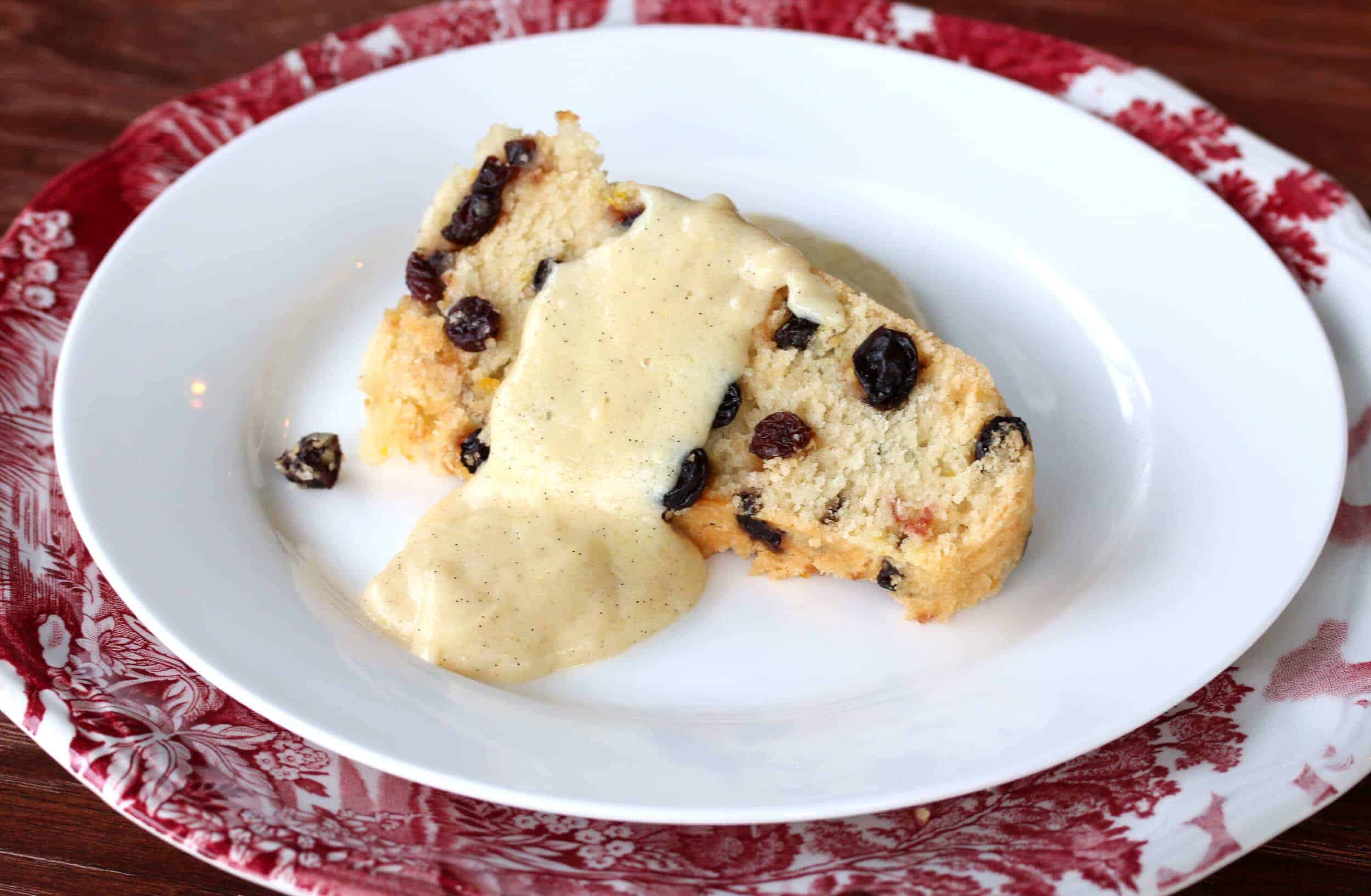
Spotted Dick is just one of many great traditional British dishes I was introduced to during the nearly 7 years I lived in England after moving there from Germany. Those were among the best years of my life and I will always consider the UK my second home. My husband also spent two years in England and Wales long before we met. He loves the UK as much as I do and we have both traced our ancestry far back to medieval times; my husband to Cornwall and mine, well, all over the British Isles.
There are many places throughout the UK that we consider favorites. Below are two of my favorite villages in England’s Cotswold region. Castle Combe, in Wiltshire on the southern-most edge of the Cotswolds, has often been named as the ‘prettiest village in England.’ Originally it was a British hill fort which became occupied by the Romans and later the Normans because of its strategic proximity to The Fosse Way. During the Middle Ages it became an important center for the wool industry and in more recent years has been a popular tourist site and setting for numerous films, including the original Dr. Doolittle with Rex Harrison, a Spielberg film, and Downton Abbey. The buildings are several centuries old and listed as ancient monuments. Their stone construction with thick walls and roofs made from spit natural stone tiles are all typical of Cotswold architecture.

Bibury is another village situated in the Cotswolds and many consider it the most picturesque. It’s located in the Gloucestershire region of the Cotswolds and has also been referred to as “the most beautiful village in England” as well as one of the most charming towns in Europe.

Arlington Row (below), with its cottages dating to the 1300’s, is one of the most photographed scenes in the Cotswolds. Bibury is also home to the world’s first horse racing club, The Bibury Club, formed in 1681.
A popular tourist attraction and setting for several films (including Stardust and Bridget Jones’ Diary), it was also a favorite spot of Henry Ford. On one of his trips to the Cotswolds he attempted to buy the entire row of houses in Arlington Row and have them shipped back to Michigan to be reassembled there in Greenfield Village. Thank goodness the English said “NO.”

It’s a charming notion to imagine the residents of Castle Combe and Bibury during the Victorian Age sitting down at the table behind these vintage stone walls enjoying a plate of Spotted Dick drizzled with custard sauce at the end of their meal.
Spotted Dick is very, very easy to make and if you’ve never had a steamed pudding before you will be especially tickled to give this a try. Not overly sweet, the sweetness comes mostly from the currants and the custard sauce, which is an absolute must. If you try serving Spotted Dick without the custard sauce the Dickensian police of Victorian England will parade into a time machine and come clobber you over the head with a wooden billy club.
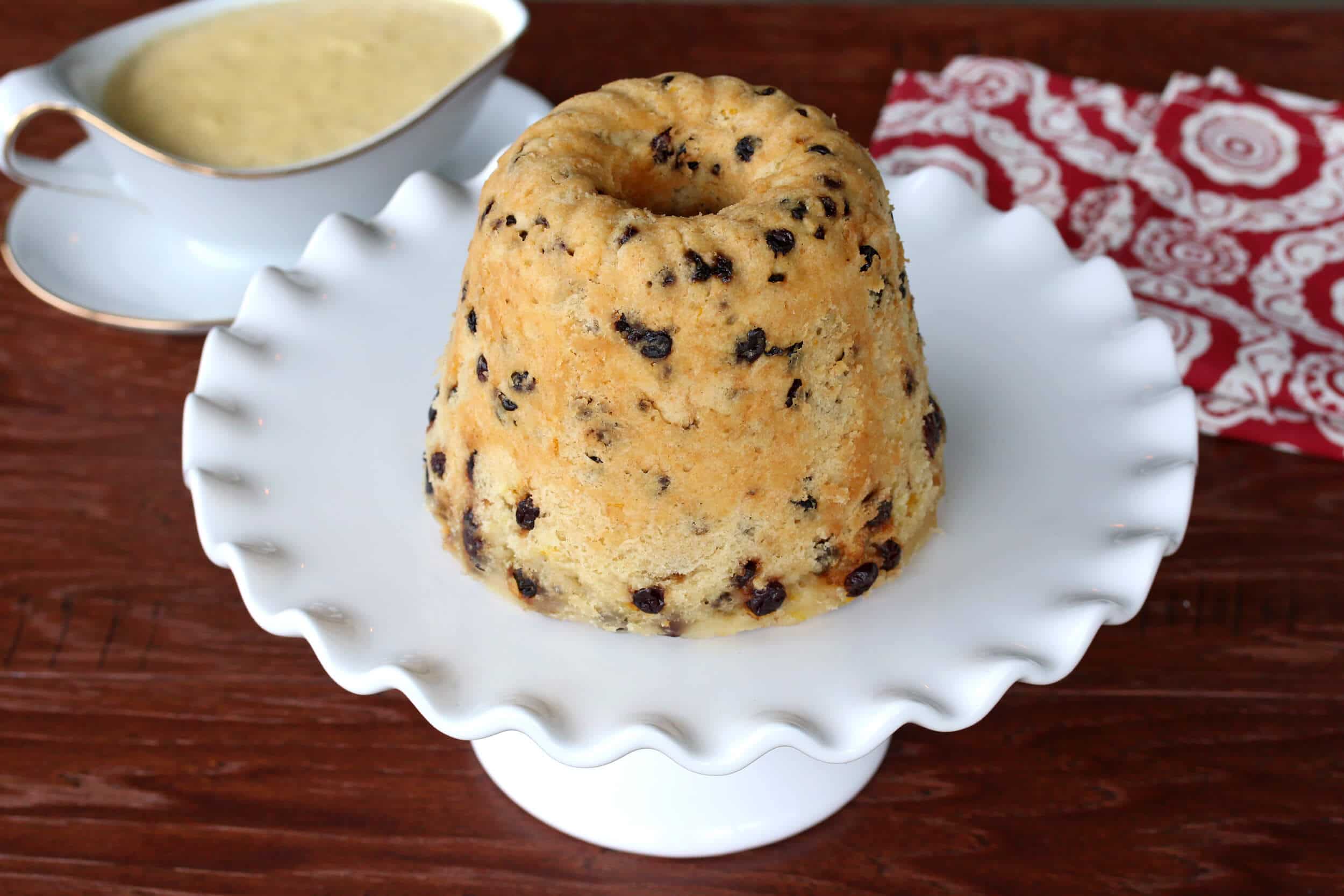
Three Ingredients for Making Proper Spotted Dick
Caster Sugar: Caster sugar is the form of sugar traditionally called for in Spotted Dick and most British baking. While very popular in the UK it’s virtually unheard of here in the U.S.. And while it can be found in some gourmet specialty shops it’s very expensive, which is silly because all it is is finely ground granulated sugar. You can make it yourself simply by grinding regular granulated sugar in a coffee or spice grinder for a few seconds. That said, though caster sugar is the traditional choice it really isn’t necessary because after 90 minutes of steaming the sugar is going to completely dissolve, whether caster or granulated. So the choice is yours.
Dried Currants: Despite their name, dried currants aren’t actually currants at all, they are in fact a small variety of raisin known as zante raisins. They are widely used in British baking and are preferred over raisins in many baked goods, including Spotted Dick, because 1) they’re smaller, remain a bit firmer and don’t get mushy, and 2) instead of being overly sweet they have a slightly more tart flavor.
Shredded Suet: Every traditional recipe for Spotted Dick calls for it as do many other British pastries and pies, resulting in a superior texture. It can be difficult if not near impossible to find in many areas outside of Britain and in more modern times many people are replacing suet with butter anyway. Butter works just fine but the beef suet has definite advantages. Suet has a high melting point and so as the pudding cooks small pockets are formed where the suet is slower to melt, resulting in a lighter, more spongy texture. The brand below, Atora Shredded Beef Suet, has been around since 1893, a household name for over a century. It’s very expensive though outside of the UK and you can very easily make your own beef suet: check out my tutorial on How to Make Beef Tallow!
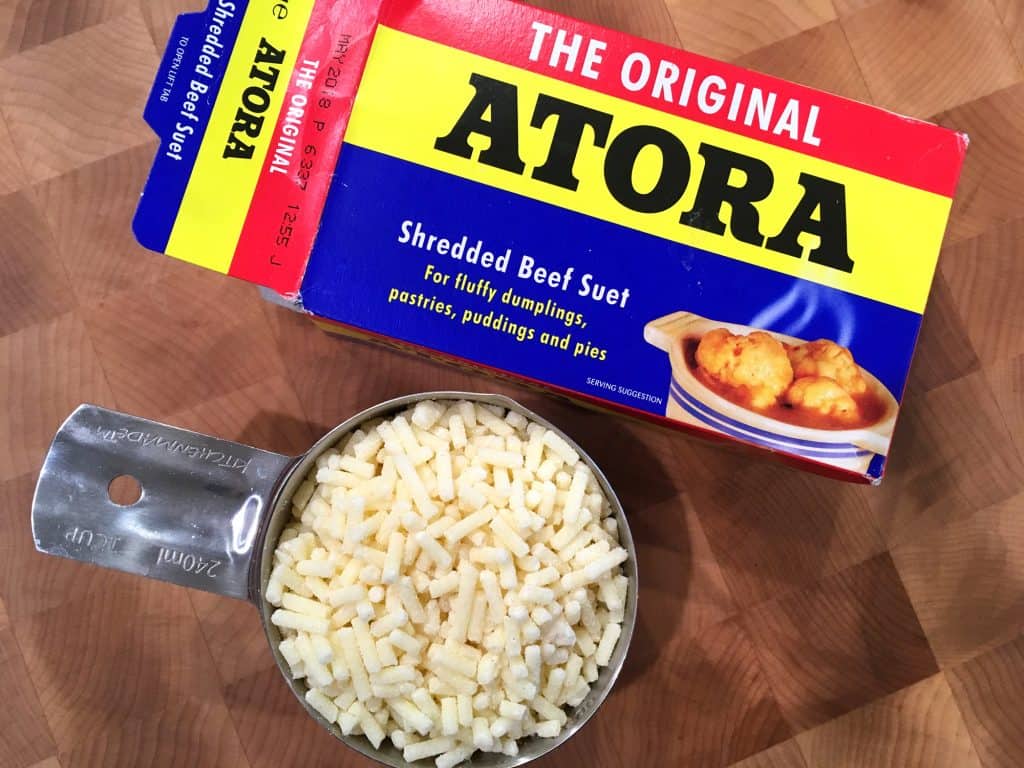
Traditional Spotted Dick Recipe
Let’s get started!
Place the flour, baking soda, salt and beef suet or butter in a food processor and pulse until the mixture resembles coarse sand. Transfer the mixture to a large mixing bowl.
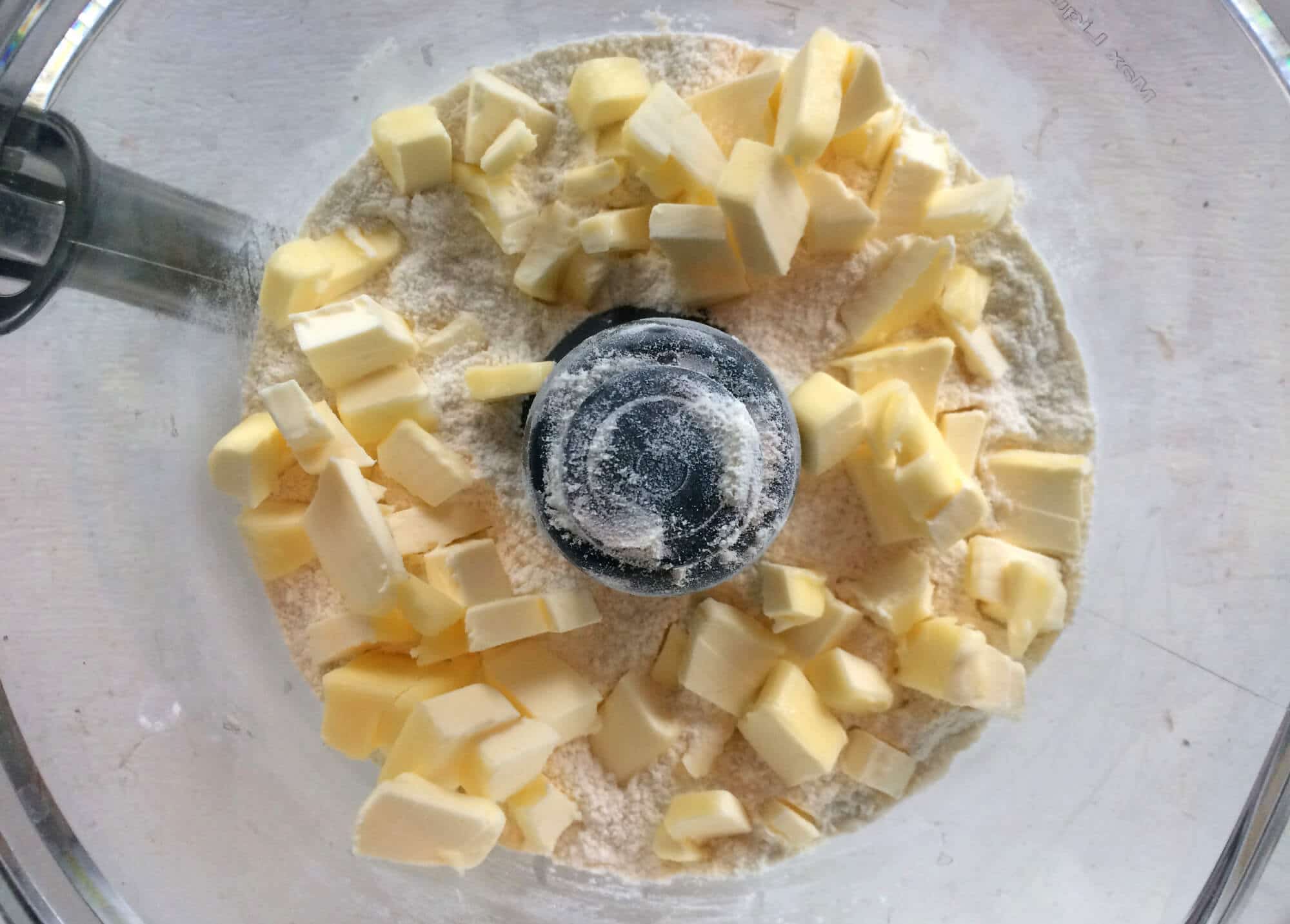
Add the milk, lemon zest, vanilla extract and currants and stir until combined.
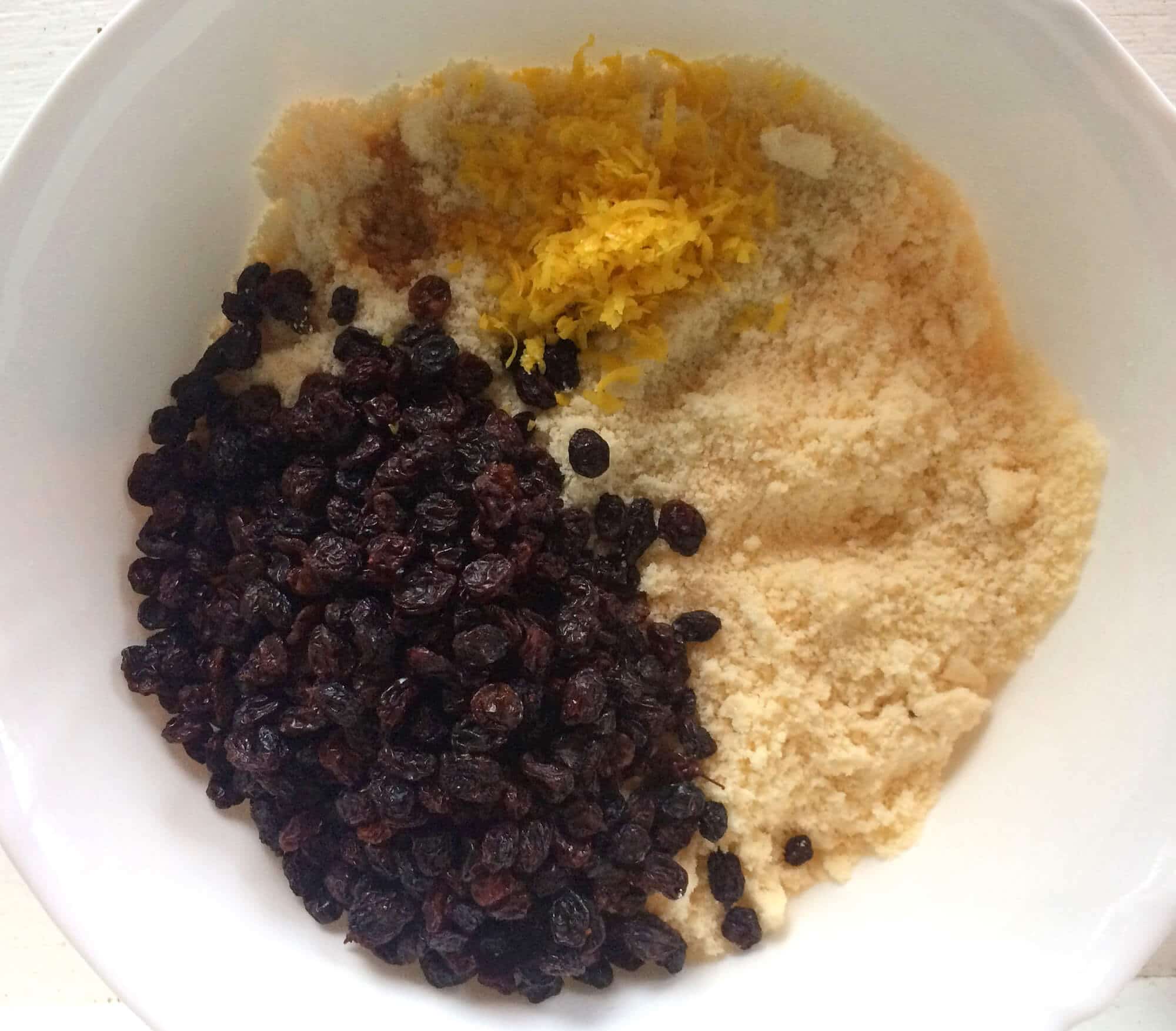
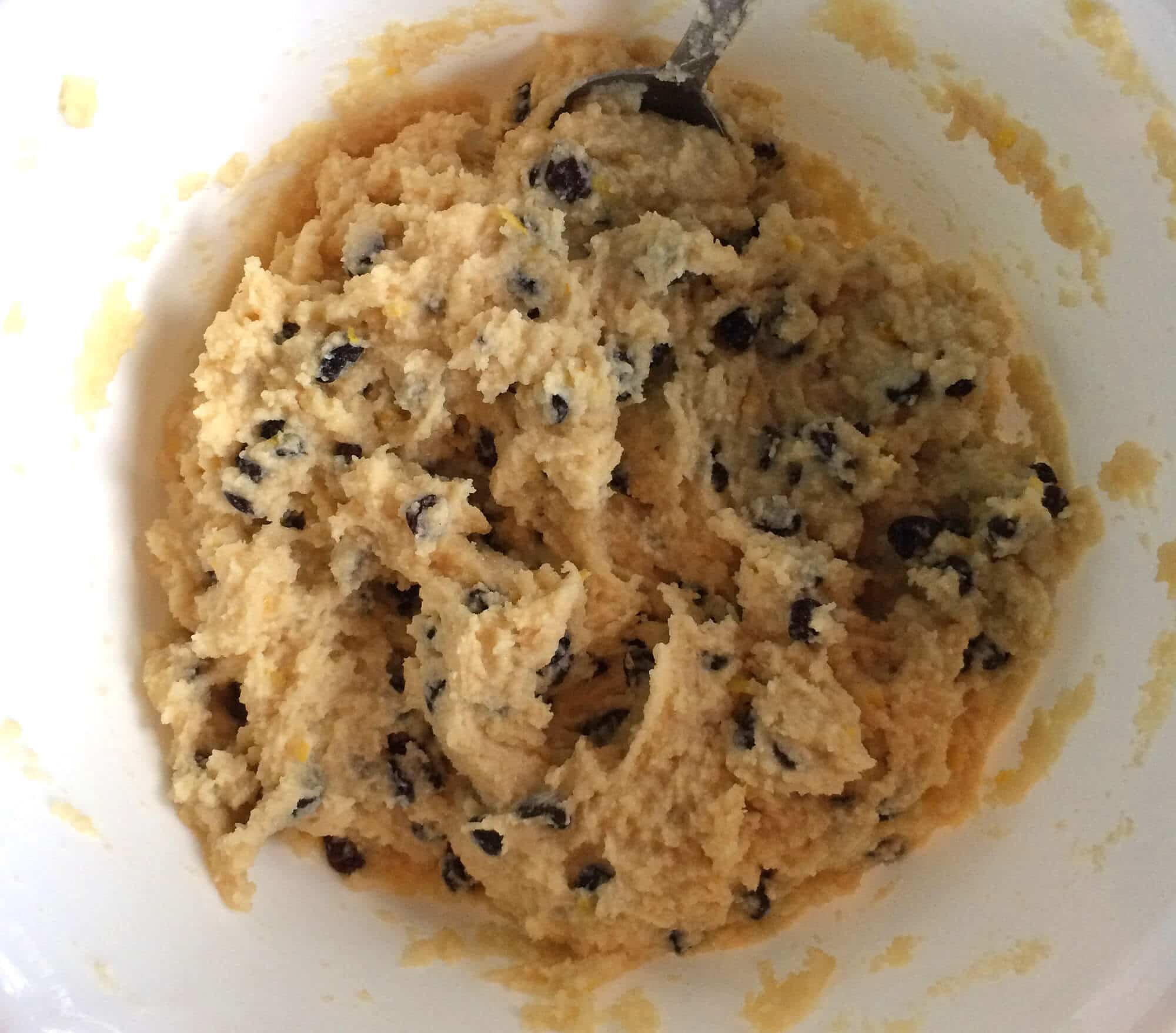
Spoon the batter into a generously greased pudding mold.
I’m using one of 4 pudding molds I own. The one in the picture holds a quart (about one liter) but most of my other ones are larger, and that’s fine, too. The smallest pudding mold (1.5 liters) with the best reviews I’ve found on Amazon is this one. A great place to find pudding molds is in thrift shops. I found two of mine at Goodwill. The other two I brought with me from Europe.
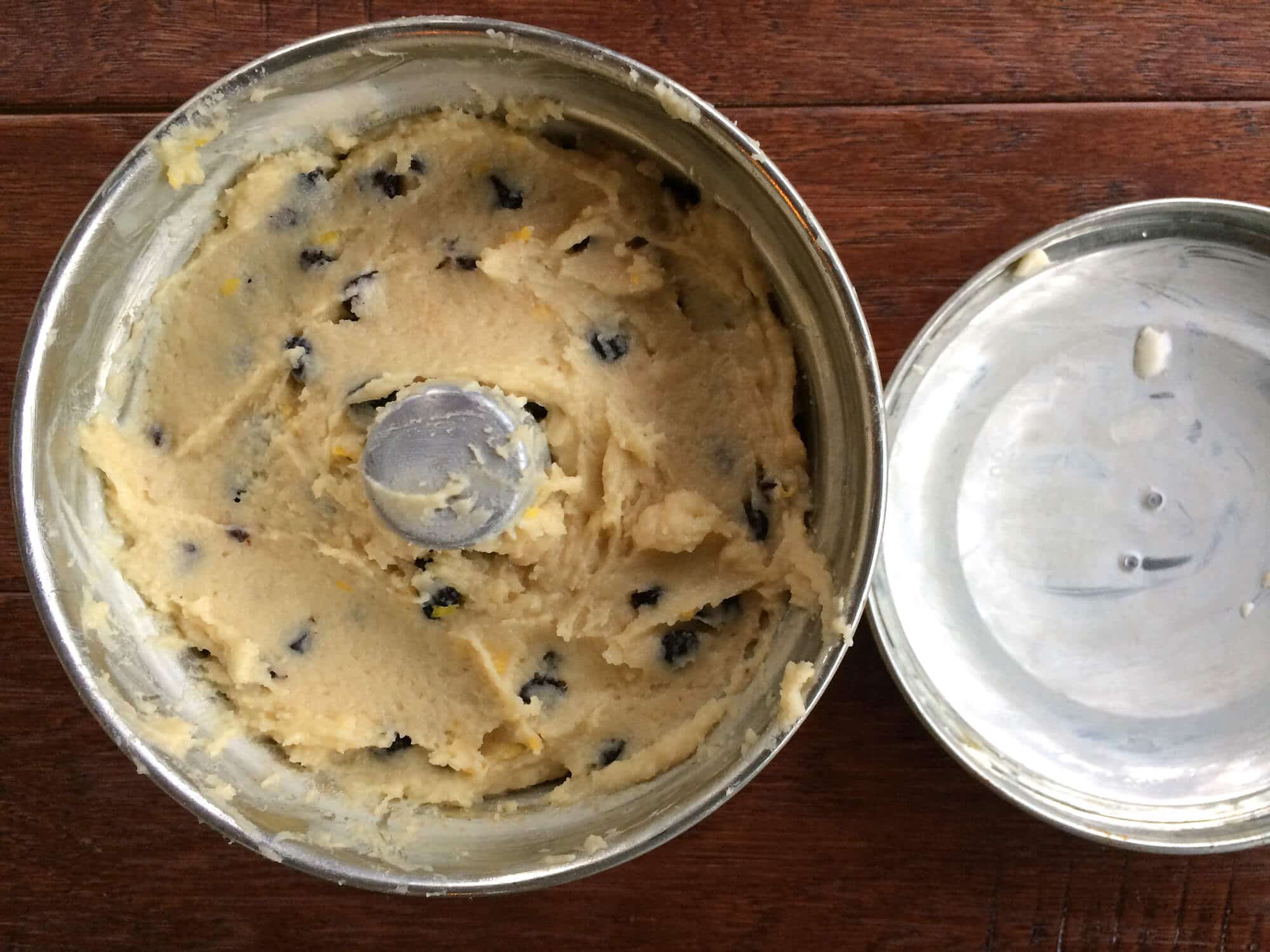
Place metal cookie cutters, a folded dish towel or crumpled tin foil on the bottom of the stock pot. The pudding mold cannot come in contact with the bottom of the pot or it will scorch the pudding.
Lower the pudding mold into the boiling water so that the water comes up to the halfway point of the mold. You’ll likely need to weight the pudding mold down with something heavy to keep it from bobbing up and down in the water. I use a plate and then put something heavy on top of it, like another bowl.
Cover the stock pot, reduce the heat to a simmer and simmer undisturbed for 3-4 hours if using suet, or about 90 minutes if using butter (suet has a very high melting point and needs that amount of time to melt and create the “pockets” throughout the pudding that yields the characteristic light/spongy texture associated with suet-based puddings). Check the water level periodically and add more water as needed to keep it at the halfway point of the pudding tin.
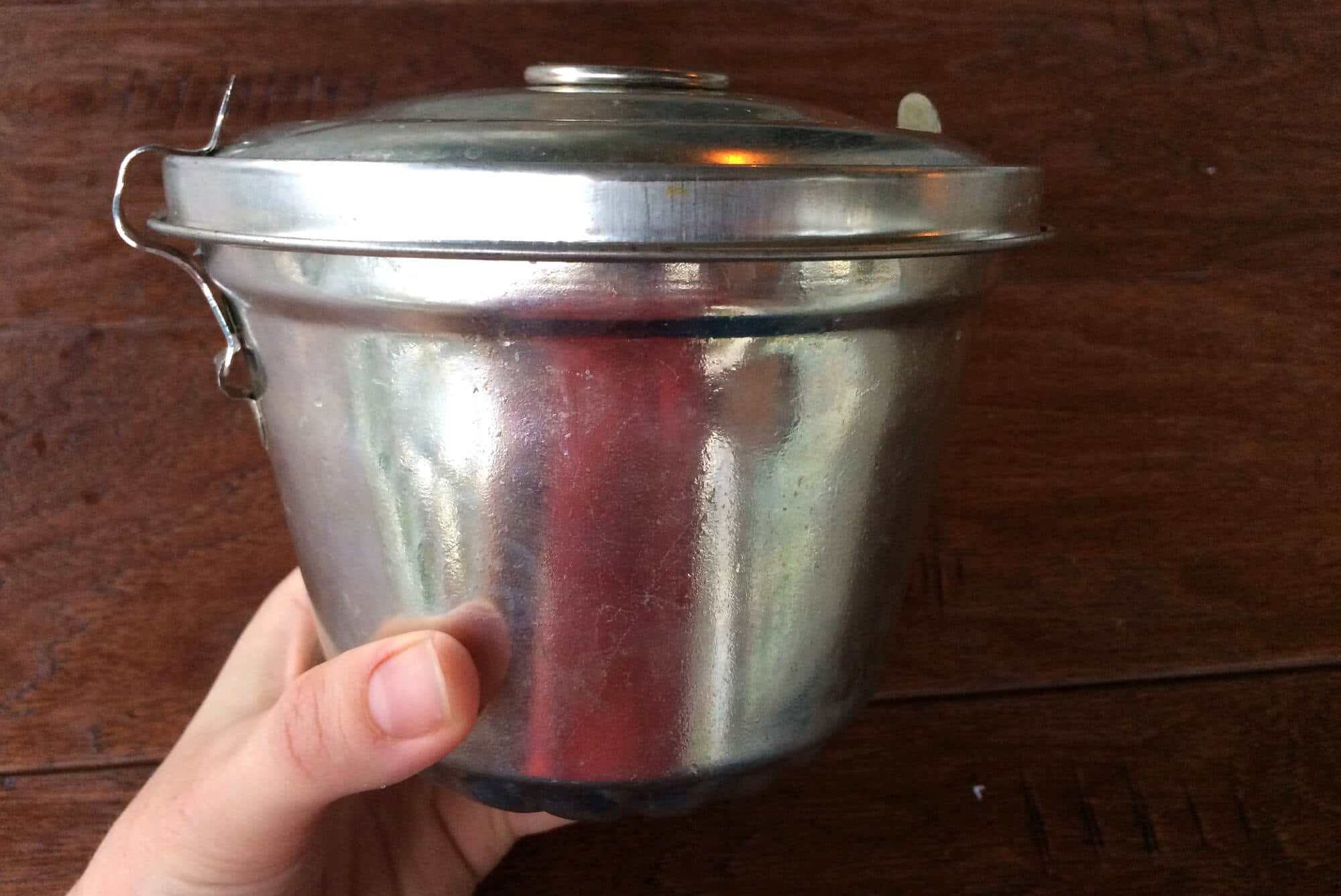
Remove the pudding mold from the water bath and let it rest for 15 minutes. Invert the pudding onto a plate.
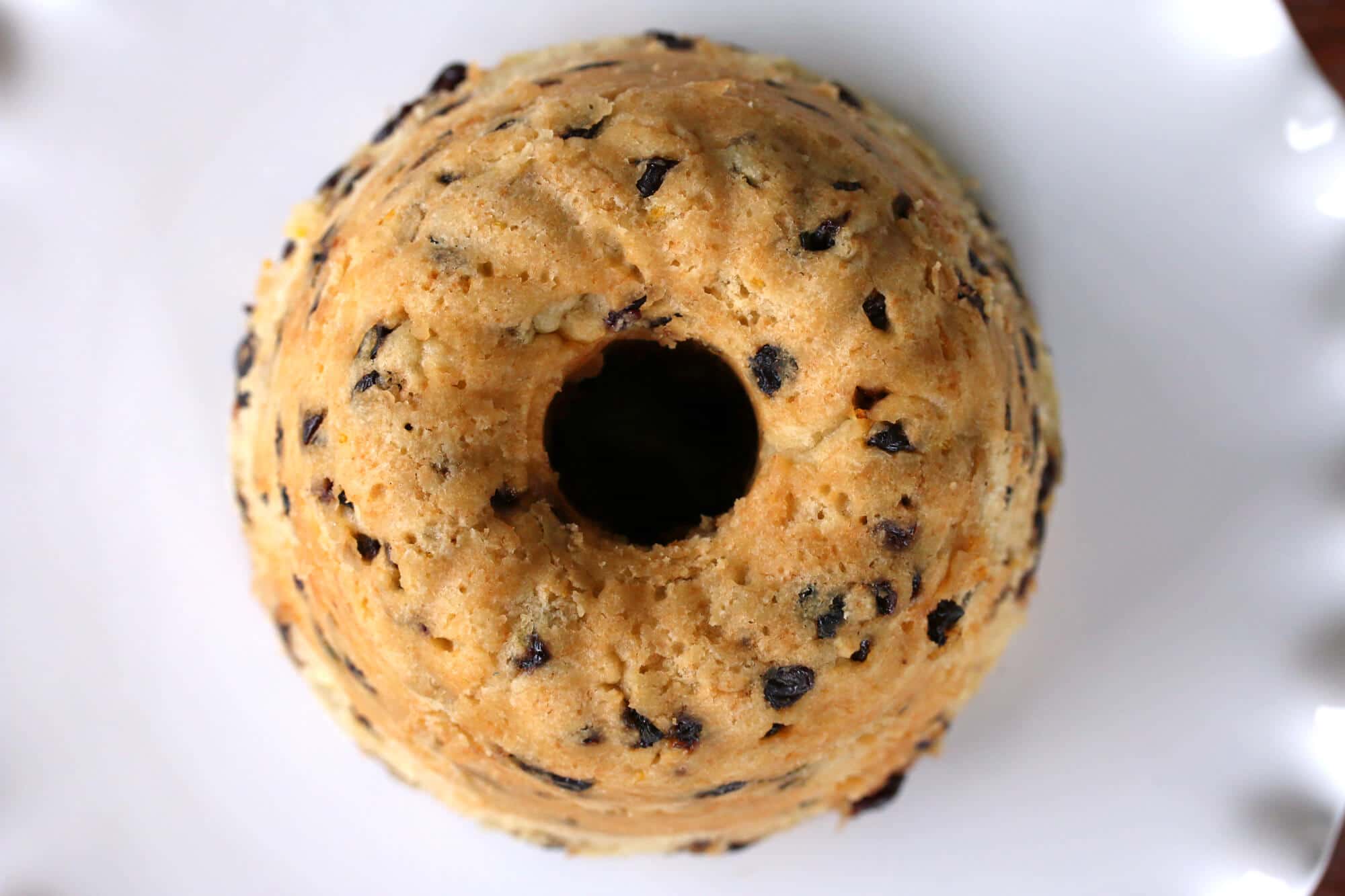
Cut the spotted dick into wedges.
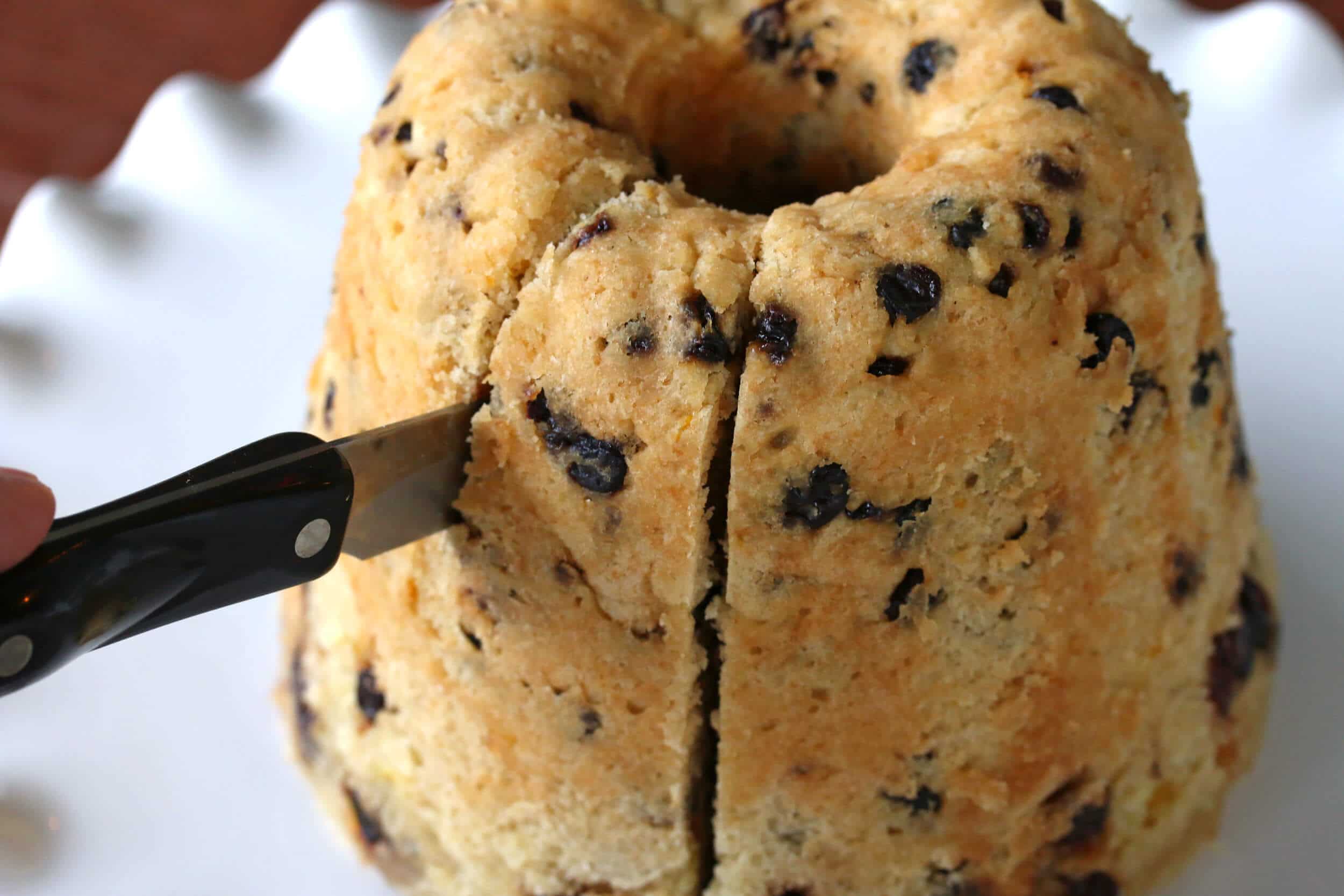
Place a wedge of the pudding on each plate.
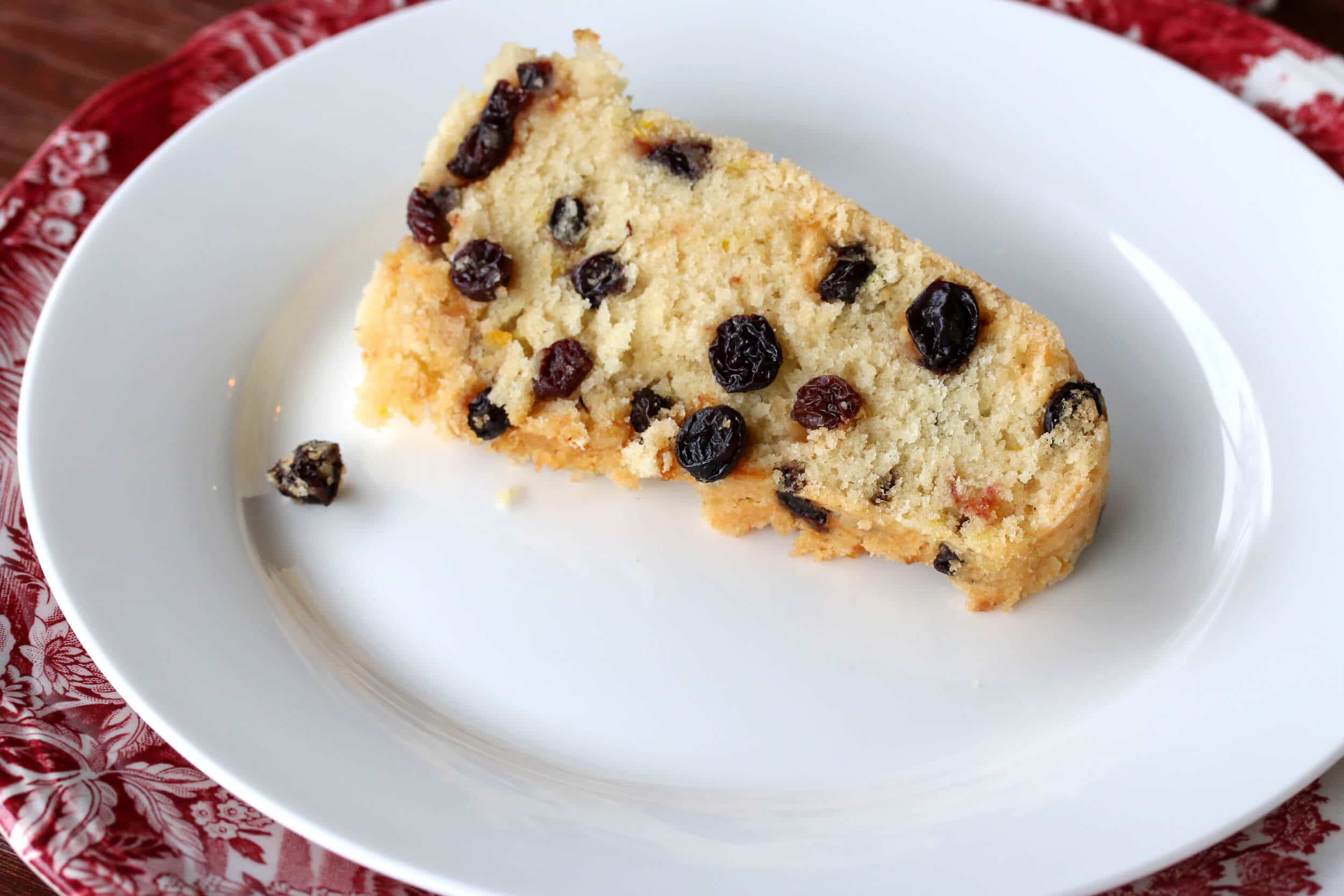
Serve the pudding warm with hot English Vanilla Custard.
Enjoy!
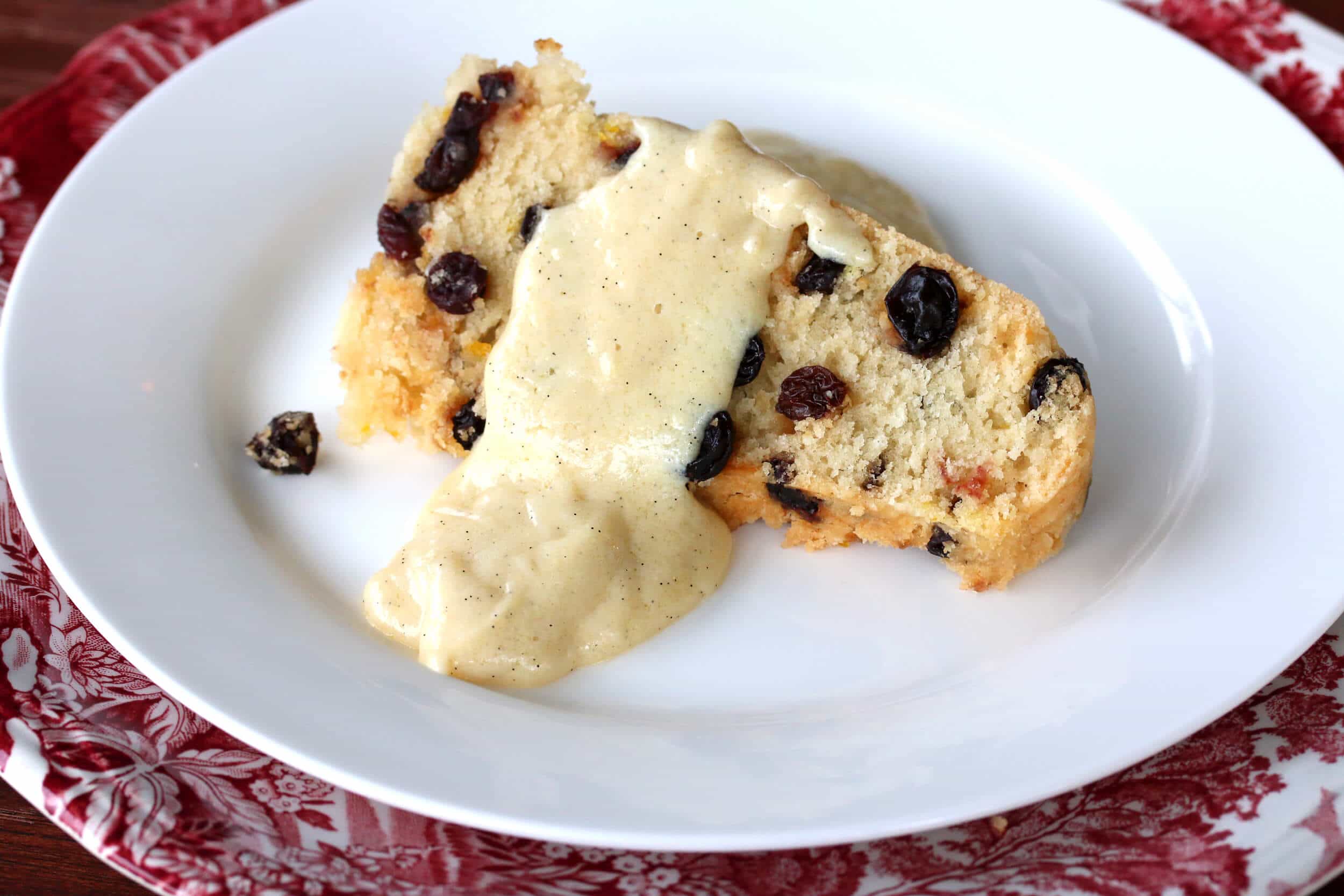
For more traditional British and Irish treats try my:
- Treacle Tart
- Lardy Cake
- Sticky Toffee Pudding
- Figgy Pudding
- Chelsea Buns
- Hot Cross Buns
- Eccles Cakes
- Welsh Cakes
- Scottish Shortbread
- Parkin
- Bara Brith
- Barmbrack
- Mincemeat
- Mince Pie
- Millionaire’s Shortbread
- Victoria Sponge Cake
Save This Recipe
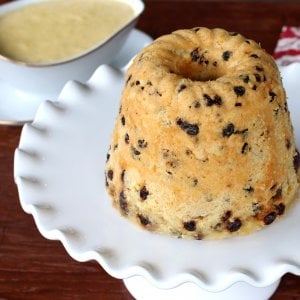
Traditional Spotted Dick
Equipment
Ingredients
- 2 cups all-purpose flour
- 2 teaspoons baking powder
- 1/4 teaspoon salt
- 5 ounces shredded beef suet (highly recommended for best results, but can substitute 10 tablespoons chilled butter, diced)
- 2/3 cup caster sugar or regular granulated sugar , see NOTE
- 1 cup dried currants
- 3/4 cup milk
- 2 teaspoons quality vanilla extract
- Zest of one large lemon
- English Custard Sauce for serving (click link for recipe)
Instructions
- Place metal cookie cutters, a folded towel, or crumpled tin foil in the bottom of a large stock pot to prevent the pudding mold from touching the bottom of the pot. Add water and bring to a boil. Generously grease a 1.6 liter pudding mold..
- Place the flour, sugar, baking powder, salt and suet (or butter) in a food processor and pulse until the mixture resembles coarse sand. Transfer the mixture to a large mixing bowl.
- Add the milk, lemon zest, vanilla extract and currants and stir until combined. Scoop the batter into the prepared pudding mold and secure it tightly with the lid.
- Lower the pudding mold into the boiling water so that the water comes up to the halfway point of the pudding mold. Reduce the heat to a simmer and simmer undisturbed for 3-4 hours if using suet (it has a very high melting point and needs that amount of time to melt and create the "pockets" throughout the pudding that yields the characteristic light/spongy texture associated with suet-based puddings) or about 90 minutes if using butter. You'll likely need to weight the pudding mold down with something heavy to keep it from bobbing up and down in the water. I use a plate and then put something heavy on top of it, like another bowl. Check the water level periodically and add more water as needed to keep it at the halfway point of the pudding tin.
- Remove the pudding mold from the water and let it sit for 15 minutes. Invert the pudding onto a plate. Slice into wedges and serve warm with Vanilla Custard. See NOTE about reheating.
Notes
Nutrition
Originally published on The Daring Gourmet December 17, 2016



















This was absolutely delicious! I wasn’t entirely sure what to expect because I’ve only ever had the tinned stuff, sorry to say. This was easier than expected and the results were perfect. I made your vanilla custard to go with it. This won’t be the last time I make it!
That’s wonderful, Renee, I’m so happy you decided to make it and that you enjoyed it! <3
Thanks for your recipe Kimberly. Being from Wales, I recommend you try our Snowdon Pudding (Pwdin Eryri) which is superior at many levels. You can save your blushes by calling your dick, a dog, if you’ll excuse the expression! Have you come across Marguerite Patten, our National Treasure who taught the country how to make the most of its rations during World War II and went on to front her first TV cookery show on the BBC in 1947! She advocated modernising these old recipes in step with our cooking habits, energy saving and in the case of steamed food, the reduction of moisture in hermetically sealed homes. So it is with her in mind, that I request you add the option of microwave cooking all steamed puddings! Even a traditional British “Plum pudding” or “Christmas Pudding” will cook beautifully in 10 minutes’ microwave time. All other Suet Puddings will take far less. Depending on quantities and volume use the timing for cakes in the user Manufacturer’s Manual or your go-to Microwave Cookery Book. Marguerite herself popped up some years ago to help cooks accept new methods and techniques and stress that microwave ovens are not only for boiling water and reheating food, but can revolutionise cooking by saving time and energy. Naturally cooking off grid or solid fuel stove-top is just great utilising any constant heat source: cooking as pay off.
Cheers or Iechyd da (as we say in Wales)
Hi Janet, it’s so funny you mentioned Snowdon pudding because I was just thinking about it the other day. Yes, I’ve had it and it’s delicious – it’s the addition of the lemon marmalade that I particularly love. It’s actually been on my (very long) “to do” list to publish on my site. Thank you so much for introducing me to Marguerite Patten. I am absolutely shocked that I wasn’t already familiar with her because I am a avid student of British food history, I collect 18th and 19th century British cookbooks, and am likewise familiar with most of the great food writers of the 20th century. I don’t know how Marguerite Patten escaped my notice but I’ll have to rectify that and I look forward to becoming acquainted with her work. You know, the thought of microwaving a pudding never occurred to me and I’m super intrigued. The next time I make a pudding I’ll have to make two of them and steam one and microwave the other to do a side-by-side comparison. I’m eager to compare results. Because 10 minutes sure is a time saver! Thank you so much for sharing these insights and again, for also introducing me to Marguerite Patten. I’d love to try and hunt down her old BBC TV cookery shows! Kind regards, Kimberly
At the very beginning, you say 1hr 30min cooking time, which we must assume includes using beef suet, as that is what is in the recipe! Then, at the death, you say 3 – 4 hrs if using beef suet!!! Why say 1.5hrs when the recipe specifically says beef suet? Unexpectedly doubles, at least, the cooking time!
Peter, my instructions explicitly state: “Reduce the heat to a simmer and simmer undisturbed for 90 minutes (3-4 hours if using suet)” with the option to use either suet or butter. Fair enough though, to reduce any confusion I’ve reversed the order of the steaming time.